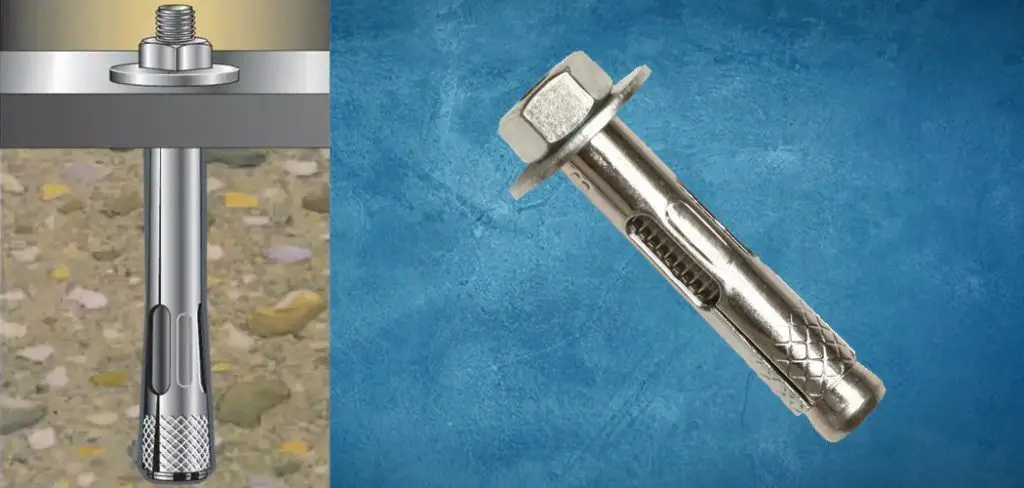Sleeve anchors are a type of fastener used in various applications, both in construction and in general repairs around the home. While they may seem like a relatively simple design, sleeve anchors work quite a bit differently than other types of fasteners. In order to understand how they work, it is vital to know a little about the anatomy of a sleeve anchor.

What is a Sleeve Anchor?
Sleeve anchors are metal fasteners in various materials, including steel, stainless steel, and zinc-plated steel. These anchors are ideal for fastening light to medium materials to concrete, brick and tiles.
Sleeve anchors have a hollow body, with a threaded bolt running backwards through the hollow body. This is then secured with a washer and nut. There are two types of heads for sleeve anchors, hex heads and flat heads. Hex head anchors create stronger bonds, while flat head anchors are used for a more flush appearance.
How Do Sleeve Anchors Work?
Sleeve anchors are a type of fastener used to secure objects to masonry or concrete. To understand how sleeve anchors work, you need a material such as a base plate.
For example, if you want to attach the base plate to your concrete floor, you will place it where you want to install it. Then, you will locate the sleeve anchors with diameters corresponding to the holes in the base plate.
Next, you will drill holes in the base plate to match the length and thickness of the sleeve anchors. Finally, you place the sleeve anchors in the holes and fasten the base plate using washers and nuts.
Sleeve anchors work by inserting the anchor through a pre-drilled hole in the base material and then tightening the nut and washer to expand the sleeve and secure the anchor in place.
Simple Process to Install Sleeve Anchors in Concrete
To use Sleeve Anchors, you must understand their installation method. The two most popular types are hex and flat-head sleeve anchors. To install them, follow the instructions below.
Before beginning any work, ensure you have all the tools and products you need. This way, you won’t have to stop in the middle of your work to look for something you need.
All the tools/products you need –
- Hammer drill
- Carbide drill bit
- Compressed air
- Hole cleaning brush
- Wrench
- Flathead screwdriver.
- Marker pen.
- Wd 40
- Hammer
Step 1 – Mark and Set the Drill Bit
Before installing a sleeve anchor, it is essential to mark the area using a marker. Next, you need a hammer drill for this. Insert a drill bit the diameter of the sleeve anchor into the hammer drill and set it to hammer mode.
Finally, you should measure the entire sleeve anchor and drill a hole 1/2-inch larger than that measurement. Warp the tape on the drill bit at this distance. This will enable you to make holes of the correct length.
Step 2 – Clean the Hole
After drilling a hole, dust accumulates in the hole and needs to be cleaned. This can be done with a compressed air duster or vacuum cleaner.
Step 3 – Place the Base Material and Nut
Place the base plate over the hole and insert the sleeves anchor. Use a hammer to tap the sleeves anchor into place. Install the washer, then attach the nut.
Step 4 – Proper Tight the Sleeve Anchor
For Hex Head Sleeve Anchor
Use a wrench to turn the drum 5-6 times anti-clockwise from the hand-tight position. You may have to turn the wrench a little more than 5-6 times, but be careful not to over-tighten. Otherwise, your anchor can move all over the place due to too much torque.
For Flat Head Sleeve Anchor
All installation rules for flat-head sleeve anchors are the same, and only a screwdriver is needed to tighten them.
Sleeve Anchor Size, Weight, Capacity
There is a difference in the size or shape of the sleeves anchor, which results in a difference in their tensile or pull-out strength. The thickness or diameter of the anchor determines its measurements.
| Size | Minimum Embedment | Torque | Pull-Out (lbs.) | Shear (lbs.) |
|---|---|---|---|---|
| ¼” | ½” | 2 to 6 ft./lbs. | 168 | 750 |
| ¼” | 1” | 2 to 6 ft./lbs. | 682 | 840 |
| 5/16″ | 1” | 8 to 12 ft./lbs. | 903 | 1770 |
| ⅜” | 1-¼” | 15 to 18 ft./lbs. | 1406 | 3082 |
| ½” | 1-½” | 18 to 26 ft./lbs. | 1676 | 3645 |
| ⅝” | 2” | 30 to 40 ft./lbs. | 3652 | 4218 |
| ¾’ | 2-¼” | 60 to 90 ft./lbs. | 3783 | 7059 |
Source: https://www.concretefasteners.com/technical-specifications-for-sleeve-anchors/
Conclusion
Sleeve anchors are ideal if you need to secure objects to masonry or concrete. They are easy to install and come in various sizes and materials to suit your needs. Sleeve anchors are the way to go for a simple and effective fastening solution.
FAQ’s
Are These Anchors Removable and Reusable?
The concrete sleeve anchor is not designed to be reused, as it is an expansion anchor. However, it is removable.
Is a Sleeve Anchor Permanent?
Yes. A sleeve anchor is a permanent, one-time-use anchor designed to be embedded in concrete. It is set in concrete, brick or block and is not intended to be removed.
Read Also: How to Remove Hammer Drive Anchors
